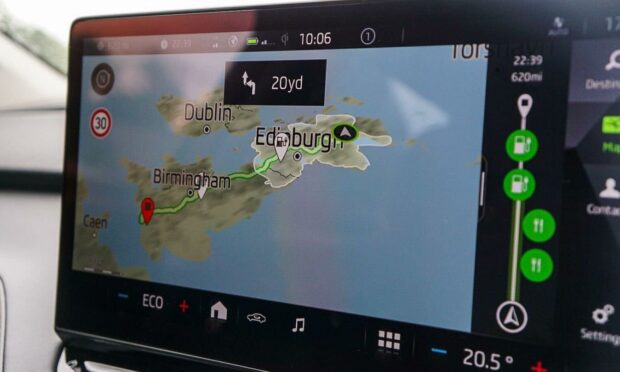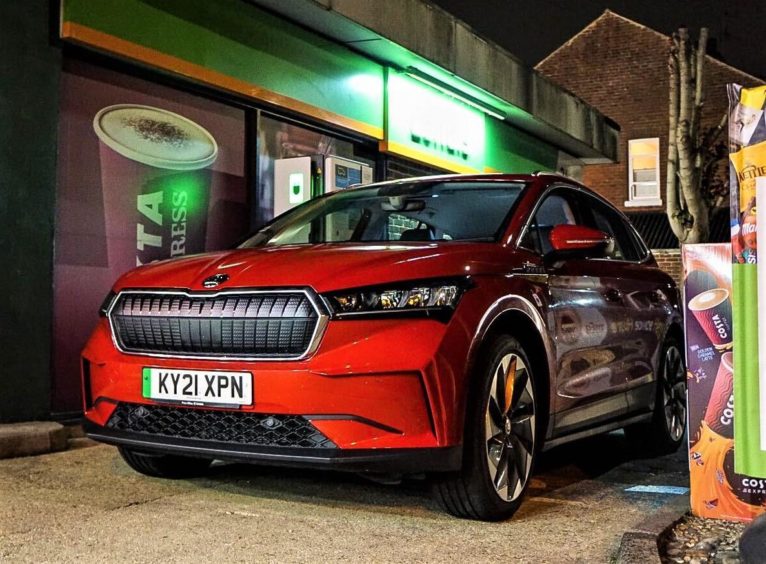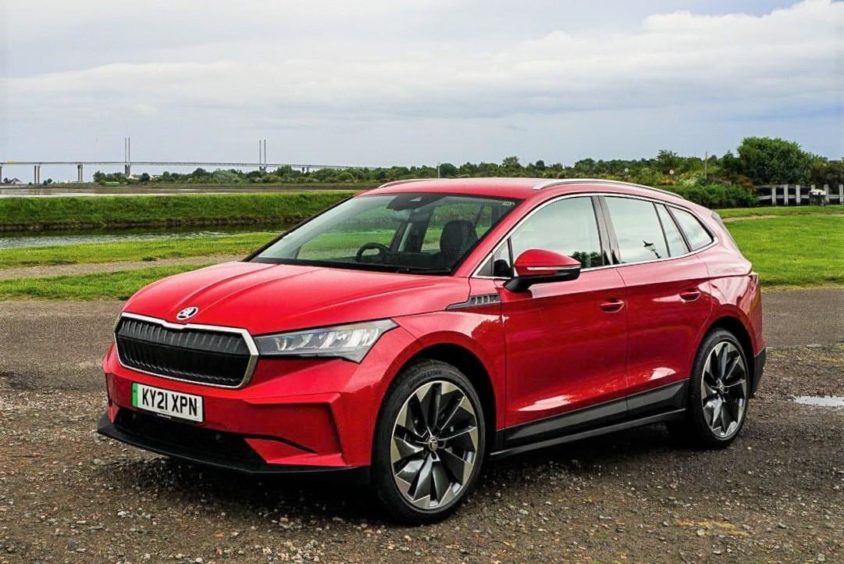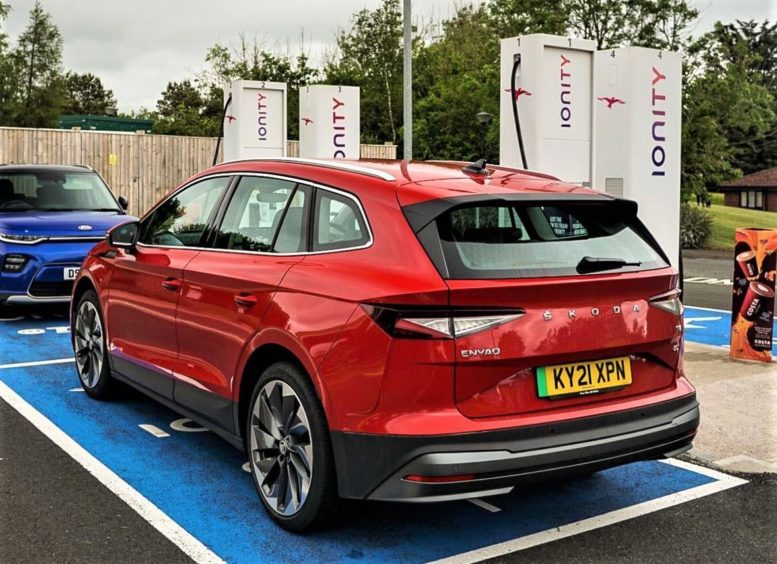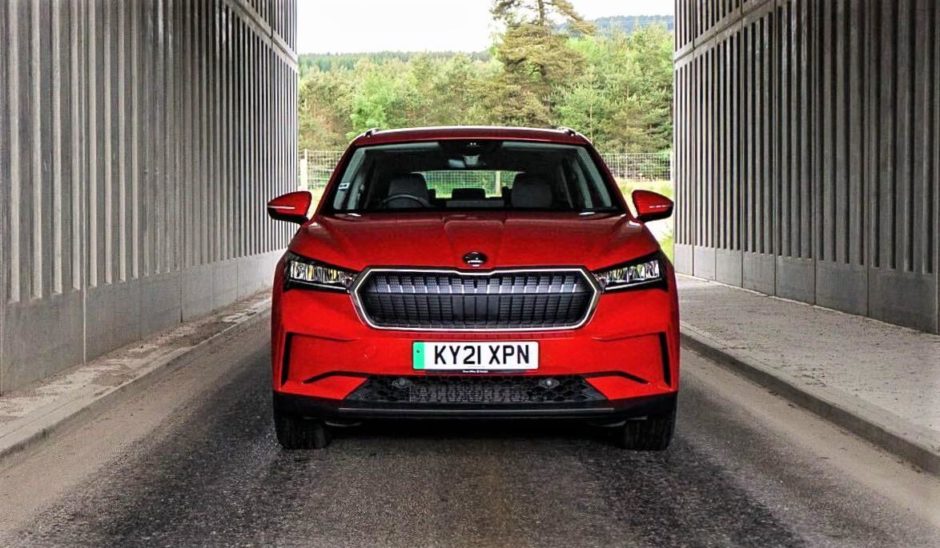Tackling 620 miles is tricky at the best of times, but what about when you’re reliant on a plug?
When Skoda asked whether or not I’d like to drive 620 miles from Inverness to the south coast in their new Enyaq iV electric car, I didn’t really give it a second thought – of course I’d want to give it a crack.
But it’s always that word – range – that gets voiced by someone whenever they ask about an electric car I’m driving. That feeling of running out of fuel is never nice, but it’s compounded in an electric car because there’s no jerry can solution – if you run out, it’s pretty much game over.
So we kick things off during a misty morning a few miles outside of Inverness and a bright red Enyaq iV 80 stands a-waiting to get going. This is the 77kWh battery version – a smaller battery is also available – and has a claimed range of 332 miles. That should, theoretically, mean a two-stop trip. But, as we all know, theory and practice are two very different things.
As I started, a range of 270-ish miles was showing on the car’s futuristic screen. Plugging my home address into the navigation causes it to calculate the distance and the available charging locations. In a “normal” car the journey should take around 10 hours. But factoring in some time to charge and stop meant that I was already looking at quite a lot of seat time with the Enyaq.
The 50kW is the bread-and-butter of EV driving
I head out and try to just relax into the journey but very quickly I spotted a problem – and it’s got nothing to do with the car, nor the infrastructure – but the route. There’s a common conundrum with EVs – do you take the shortest route via motorways and blitz through your range, or go off the main route and retain additional battery? I opt for the latter and turn off the A9 to womble my way along the tourist route.
Cascading down through places like Aviemore and Dalwhinnie does little to dent the Enyaq’s range and even though at some points I can see the A9 flanking me, I think that elongating the car’s charge is a worthwhile trade-off.
Soon I’m passing through Dunblane and notice that there’s a 50kW charger at the town’s Hilton. The 50kW is the bread-and-butter of EV driving now; a lower-powered 7kW charger might be fine for overnight, but it’s next to useless for my needs as it simply doesn’t add charge quick enough.
I stop and give the car a 24-minute charge, delivering 18.6kWh for the princely sum of £4.64. I connect via the BP Pulse app, which works with zero hassle. So far, no drama.
I’ve now got enough charge to carry on to the superfast Ionity chargers at Gretna Green some 100 miles away. As I arrived three, three other cars were already charging but with four connectors I didn’t think that this would be much of a problem. Until I tried to charge that is.
Plugging in resulted in an error message saying that the charger didn’t have enough power available. I can only assume it was because the other cars were charging at maximum speed, but it really should be able to cope with the number of cars, right?
An expensive charge stop
One of the vehicles moved off and – wouldn’t you know it – I could start charging. It had taken two failed attempts. What’s more, each attempt had taken a £67 pre-authorisation from my current account. I can understand a few pounds like operators do for petrol, but £67? By the end of my charge, over £200 was out of my account from pre-authorisations. Of course, it went back in – over a week later – but this really isn’t the way it should work.
At 69p per kWh, the Ionity is one of the most expensive chargers out there. Sure, you get a quick charge, but given the average cost of home energy is around 14p per kWh, it’s quite ridiculous. I left the car on for half an hour – delivering just over 44kWh – and it cost £30.91.
I put it behind me and got stuck into the M6. I knew that there was a a 50kWh charger in Knutsford, which is handily located outside the Legh Arms and, to my relief, the Tesla parked there moves off almost as soon as I arrive. I end up leaving the car on the charger for just over an hour and in total, the charger delivers 49.56kWh for £15.36. It only ends up highlighting the madness of the Ionity’s cost.
There definitely needs pricing regulation put in place as operators seem to be free at the moment to charge whatever they like
I take the M6 toll road and I’m soon skating down the M40 and onto the A34 towards Winchester, but at well after midnight, it’s starting to get to that point in a trip where you’d just like to be home. So some 15 hours later, of which 12 were spent driving, I rock up to my front door.
What did I learn? Well, you can do long journeys in EVs, certainly. The infrastructure is getting there, but there definitely needs pricing regulation put in place as operators seem to be free at the moment to charge whatever they like.
620 miles for £38
In total, the journey cost £52.87. Yes, I’ll agree that a super-efficient diesel could do the same distance for less money, but I’m taking £15 off the total because if I’d properly researched the price of Ionity, I would’ve stopped for longer and spent less.
A trip of 620 miles for £38? I don’t think that sounds bad at all – and as far as long-distance drives go, EVs and the Enyaq are well up for the challenge.
